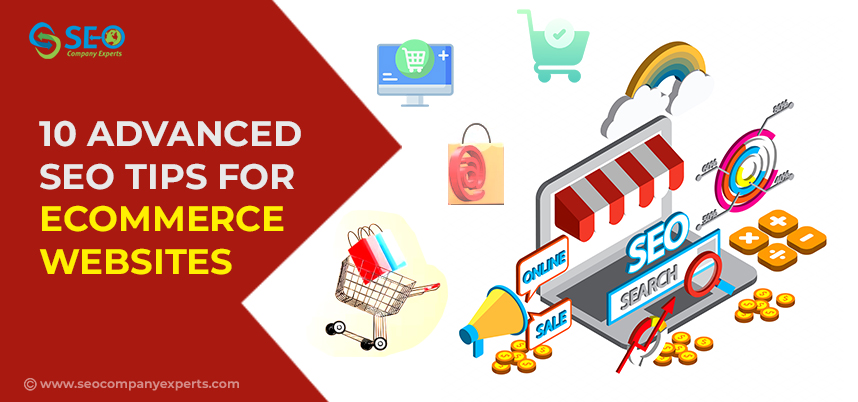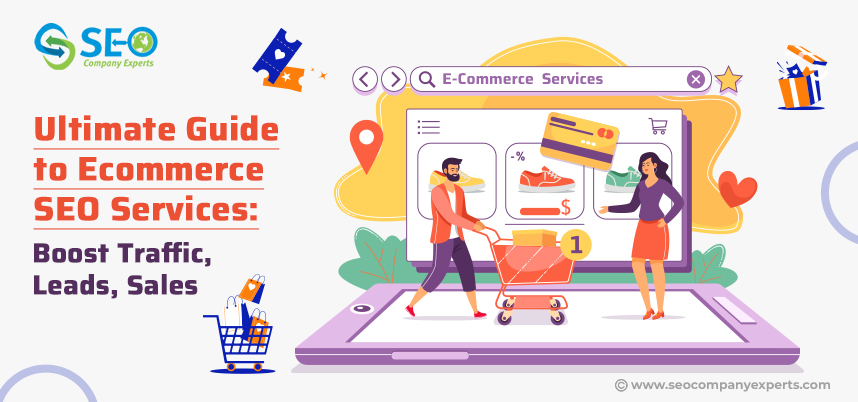

E-commerce businesses have a lot to gain from search engine optimization. Many online stores are built without any thought to search engines, even though SEO offers one of the best ROIs of any eCommerce marketing strategy.
Instead, many rely on social media or paid ads which can be excellent for firms but often demand a constant effort and stream of cash. Ad expenditure costs firms billions of dollars annually, which only increases. While SEO requires consistent attention, you can earn sales automatically if your site is where you want it to be. With this in mind, having the best eCommerce SEO services provider can help alter and unleash your online business.
Techniques for Improving Search Engine Rankings Within Individual Web Pages
Making sure your keywords are strategically placed on your eCommerce platform’s pages is crucial to on-page SEO. It’s a method for clarifying your page’s topic for Google. You may improve your visibility in more areas of the SERP by focusing on on-page SEO.Here are some of the components that determine a site’s position on search engine results pages:
Keyword analysis for online stores.
Identifying relevant keywords is the foundation of every successful online store search engine optimization (SEO) strategy. If you botch this step, there are two possible outcomes:
- You’ll waste time and effort trying to reach page one by aiming for obscure, unpopular search terms.
- You’ll get high placements for keywords that don’t bring in visitors or convert them into buyers.
It is why eCommerce keyword research is crucial; it will help you zero in on keywords that are simple to rank for, receive a respectable amount of monthly searches, and have reasonable conversion rates.
Selecting keywords, however, involves more than just thinking about how competitive they are or how often they are searched. You may identify keyword difficulty (KD), search volume, and buyer intent with the following tools for eCommerce keyword research:
1. Figure out if you have the proper keywords.
You must utilize a program to have keyword data for the selected terms. To choose the right keywords, you must first ascertain their competitiveness, the number of times you will search for them, and the purchasers’ goals.
You may use Google’s Keyword Planner to estimate search volume and CPC, which helps gauge user interest and identify keywords to target potential buyers. However, it does not provide information on keyword dispersion or difficulty. It would help if you made a keyword matrix to take your SEO seriously and make the most of your keyword distribution. You can rapidly identify the ideal keywords to utilize on each page with the help of an eCommerce SEO company. They help you organize your keyword research and your spreadsheet.
2. Do your keyword research with the help of Amazon.
People often do searches on Amazon to make a purchase, making it a rich source of high buyer intent keywords. You can use Amazon’s keyword search to identify related terms by entering your seed keyword. In response, Amazon will spit out autofill suggestions. Put these keywords into a Google doc to use later on.
It could take a long time, as you can expect if you have hundreds or thousands of products. You can use the Amazon Keyword Tool for this purpose. With this program, you will immediately scrape any keyword you enter from Amazon’s autofill recommendations. The “Download Selected Keywords” button allows you to save your search terms to a CSV file after each search.
3. Find keywords using competitive research.
You can steal keyword ideas from your top-ranking competitors by visiting their websites. Start by searching Google with your target term, then select a competitor whose category and product pages you’d like to emulate.
Only utilize the same term as your competitors just because they rank higher than you do, without considering other variables, such as domain authority. Breadcrumbs, a sophisticated navigation mechanism that helps Google scan and index your site, are also crucial to think about. If you type in your website’s address into Google, you’ll see a results page that will tell you whether or not your breadcrumbs have been set up correctly. If you have a structure like “yoursite.com -> category -> subcategory,” you have breadcrumbs set up.
Website Pages that sell goods online.
Product and category pages are undoubtedly the most crucial pages to rank. The moment someone who uses Google to find them has access to all of your products in that category. To fully optimize these pages, you need to insert your target term in the following places:
Where is the URL located?
One easy technique to boost search engine ranks is to include the primary keyword in the URL. It is especially essential for websites competing in highly competitive areas since optimized URLs are an additional way you gain an advantage over your competition to attract more visitors. You can modify them to include any keyword that improves the visibility of your category pages.
In the title tag.
It is essential to have the term appear early in the H1 tag or page title. It highlights the page’s primary topics and helps you rank organically for the title tag.
While reading the main text.
The more complicated part is the body copy. Google prefers category pages that lead readers gradually to the products, while most category pages go right to the goods. It would be preferable to aim for at least a 300-word opening with your keyword included at least 2-3 times.
In image alt text.
Since Google can’t read photos, they rely on alt text to know what the image is and what it includes. By including your keyword in the image’s alt text, you can increase its visibility in Google’s image search results.
In the metadata.
Metadata that includes your keyword may not directly affect search engine ranks, but it can increase CTR, which has been proven to boost rankings. It is because Google emphasizes the meta description and description tags where the primary term appears. Repeat this process for each of your categories and then for each product.
Advertising with written content.
The use of content in current marketing strategies is growing. Most marketers (96%) believe content marketing has helped their brand.
- A significant percentage of marketers (over 50%) utilize organic traffic as a success metric.
- Seventy percent of businesses are putting money into content marketing.
Creating high-quality content is a simple yet effective strategy to increase your e-commerce site’s keyword rankings and the number of inbound links. Keep in mind that you can rank a finite number of keywords on product and category pages. You cannot expand your search area once you have exhausted those options.
It is when content comes in handy to help bridge the gap. Now you may rank for short and long-tail keywords related to your industry. By facilitating the creation of inbound connections to your site, content marketing can boost your domain authority and, in turn, your traffic and sales.
The structure of a website.
The architecture, often known as the structure, of an e-commerce website refers to the organization of its navigation, category pages, and product pages. At its core, it is about reducing the number of times potential consumers have to click in order to discover the material they are looking for while simultaneously putting the best and most relevant content in front of those potential customers.
Link Building Strategies
Your search engine rankings can be improved more than almost every other ranking factor by having backlinks to your website from other websites that have a high domain authority. Because they are considered off-page SEO, they are a little more complicated and time-consuming than simply making a tweak to your website. This is due to the fact that they are considered off-page SEO. In order to acquire those links, you will need to work together with various other bloggers and retailers.
Last Words.
You can attract traffic through social media, paid advertisements, and email. However, search traffic is the only one that’s trustworthy, free, self-sufficient, and relatively straightforward to get. Learning the ins and outs of eCommerce SEO methods might revolutionize your business if you want your site to attract many visitors. Our SEO Company Experts provide the best campaign that can increase your revenue by orders of magnitude when properly executed. Most notably, Getting there doesn’t have to be a long, drawn-out process. Using an eCommerce SEO agency USA, you should arrive there quickly.




![E-commerce SEO: A Simple Guide for Beginners [2024]](https://www.seocompanyexperts.com/wp-content/uploads/2024/04/Ecommerce-SEO-A-Simple-Guide-for-Beginners.jpg)

